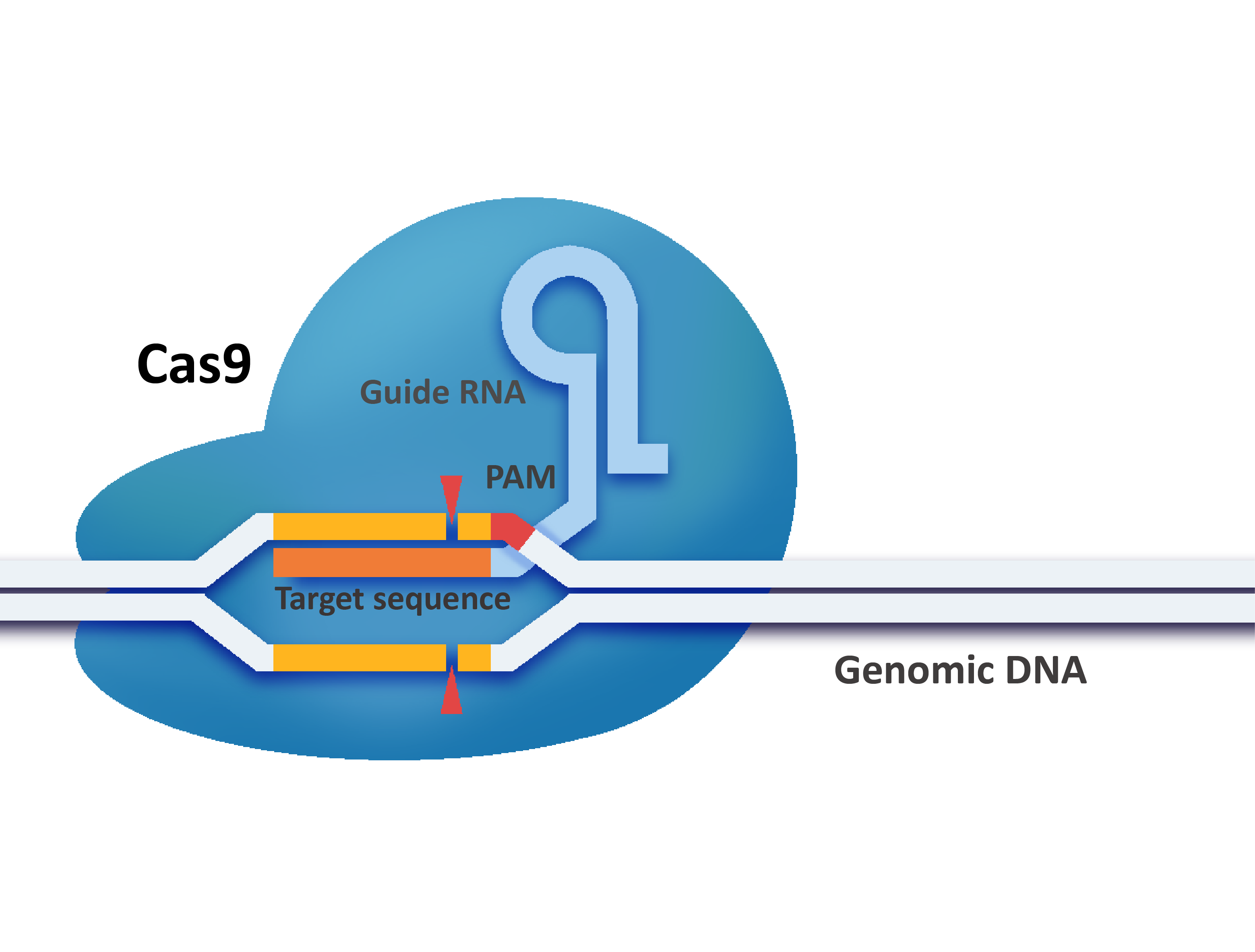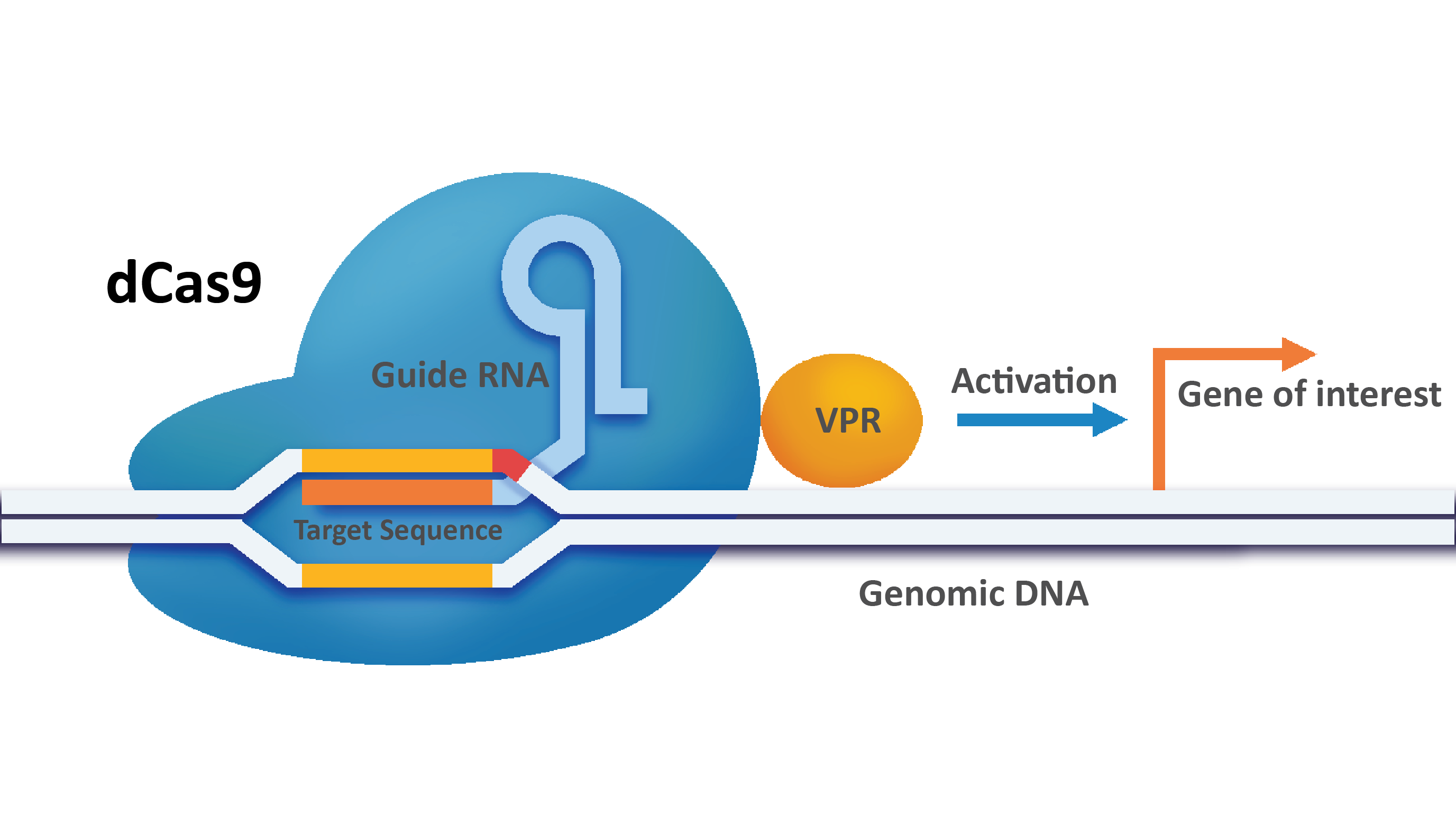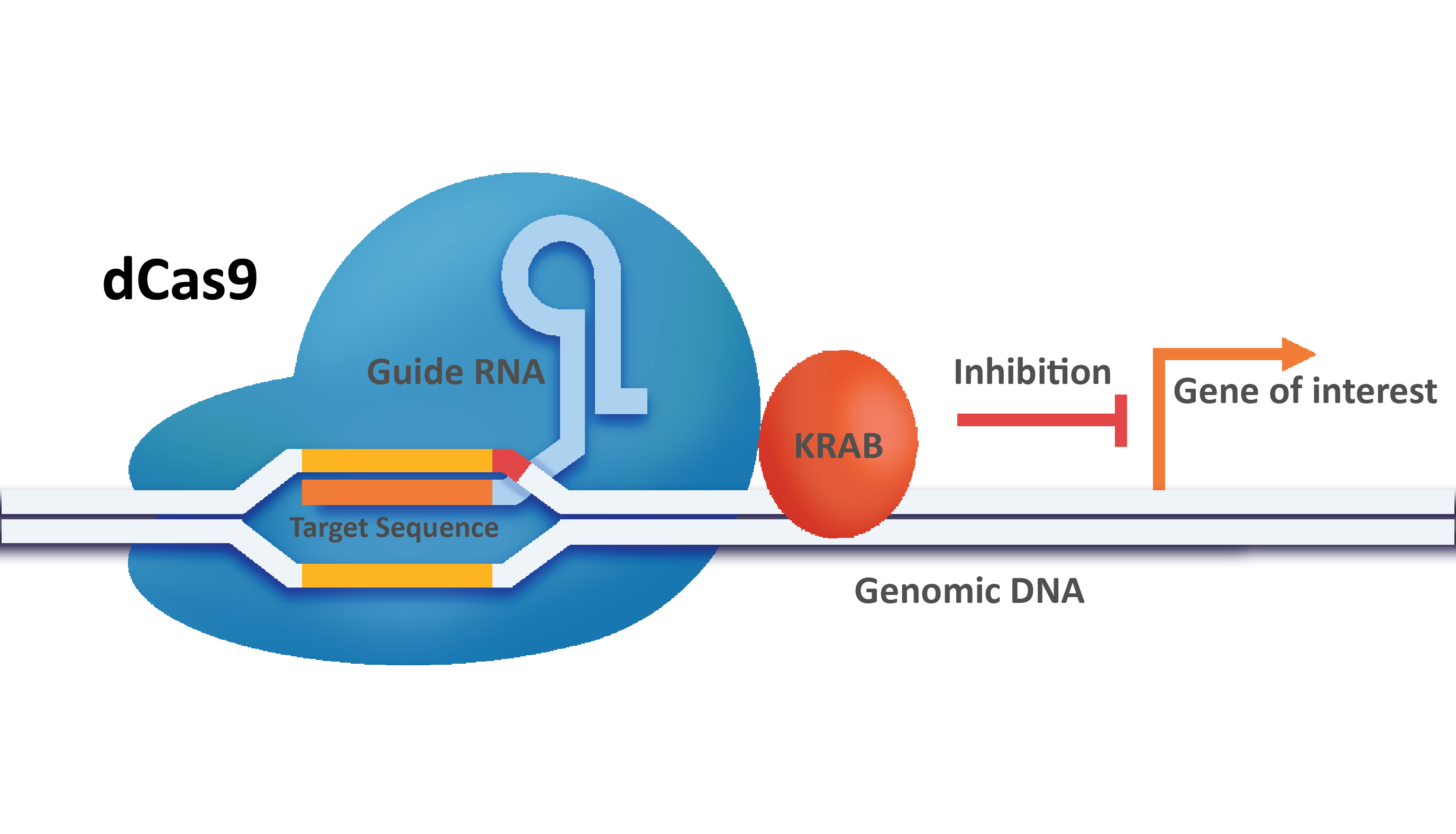Gene Editing
The CRISPR-Cas9 system has become an increasingly popular gene editing tool, consisting of a Cas9 enzyme and a guide RNA. Cas9 endonuclease acts as molecular scissors and uses CRISPR sequences as guides to recognize and cleave target DNA that contains the complementary sequence. Each guide RNA consists of a pre-designed RNA sequence (20 bases long) located within a longer RNA scaffold. The scaffold binds to DNA and the guide RNA ‘guides’ Cas9 to the complementary region in the gene. The guide RNA is responsible for Cas9’s ability to cut at the desired site within the genome. Through non-homologous end joining (NHEJ) of the double breaks in DNA, small insertions or deletions (Indels) may result in gene inactivation or knockout. Hence, by manipulating the nucleotide sequence of the guide RNA, the CRISPR-Cas9 system can be programmed to target any DNA sequence for cleavage. The CRISPR-Cas9 technique has a wide variety of applications such as basic biomedical research, development of biotechnological products, and treatment of medical conditions containing a genetic component.
of the double breaks in DNA, small insertions or deletions (Indels) may result in gene inactivation or knockout. Hence, by manipulating the nucleotide sequence of the guide RNA, the CRISPR-Cas9 system can be programmed to target any DNA sequence for cleavage. The CRISPR-Cas9 technique has a wide variety of applications such as basic biomedical research, development of biotechnological products, and treatment of medical conditions containing a genetic component.
Over the years, Alstem has developed Gene-Specific gRNAs that are ready to use for your gene editing projects. These gRNAs have been selected for their high cutting efficiency and specificity by using several online gRNA selection tools. Each selected gRNA is cloned into an expression vector, where a U6 promoter drives the expression of the gRNA while a CBh promoter controls the expression of an SpCas9 and a puromycin resistance gene. These gRNAs have been experimentally validated to ensure their efficient gene editing ability. For a given gene, the gRNAs can be used individually or in pairs to generate frame shift knockouts or delete regulatory elements.
When Cas9 is replaced with a catalytically inactive protein (dCas9), the CRISPR-Cas9 system can be used to regulate or study gene expression of endogenous genes. To study gene activation or up-regulation, the dCas9 protein is fused with a transcriptional activator such as the tripartite fusion of three transcription activation domains: VP64, p65  and Rta (VPR) and a customized single guide RNA (sgRNA). The Cas9-sgRNA complex binds to DNA elements complementary to the sgRNA and recruit transcription factors to increase gene expression, resulting in activation of the target gene. Alstem has developed this CRISPR activation (dCas9-VPR) system that comprises two sets of separate lentiviral vectors: the dCas9-VPR vectors and the gRNA expression vectors. Alstem offers multiple lentivirus expression vectors for the dCas9-VPR and the gRNA to facilitate your gene activation research. An iPS cell line that stably express dCas9-VPR is available at Alstem.
and Rta (VPR) and a customized single guide RNA (sgRNA). The Cas9-sgRNA complex binds to DNA elements complementary to the sgRNA and recruit transcription factors to increase gene expression, resulting in activation of the target gene. Alstem has developed this CRISPR activation (dCas9-VPR) system that comprises two sets of separate lentiviral vectors: the dCas9-VPR vectors and the gRNA expression vectors. Alstem offers multiple lentivirus expression vectors for the dCas9-VPR and the gRNA to facilitate your gene activation research. An iPS cell line that stably express dCas9-VPR is available at Alstem.

In contrast, when the dCas9 protein fused with a transcriptional repressor such as the Krüppel-associated box (KRAB) repressor, it can be used to inhibit or suppress expression of endogenous genes. When a customized single guide RNA (sgRNA) is present, the Cas9-sgRNA complex binds to DNA elements complementary to the sgRNA and causes a steric block that halts transcript elongation by RNA polymerase, resulting in the repression of the target gene. Similarly, Alstem has developed and offers this CRISPR inhibition (dCas9-KRAB) system that consists of the dCas9-KRAB lentivirus vectors and the gRNA lentivirus vectors. You can choose from multiple lentivirus expression vectors to suit your gene inhibition or suppression research. An iPS cell line that stably expresses dCas9-KRAB is also available.
